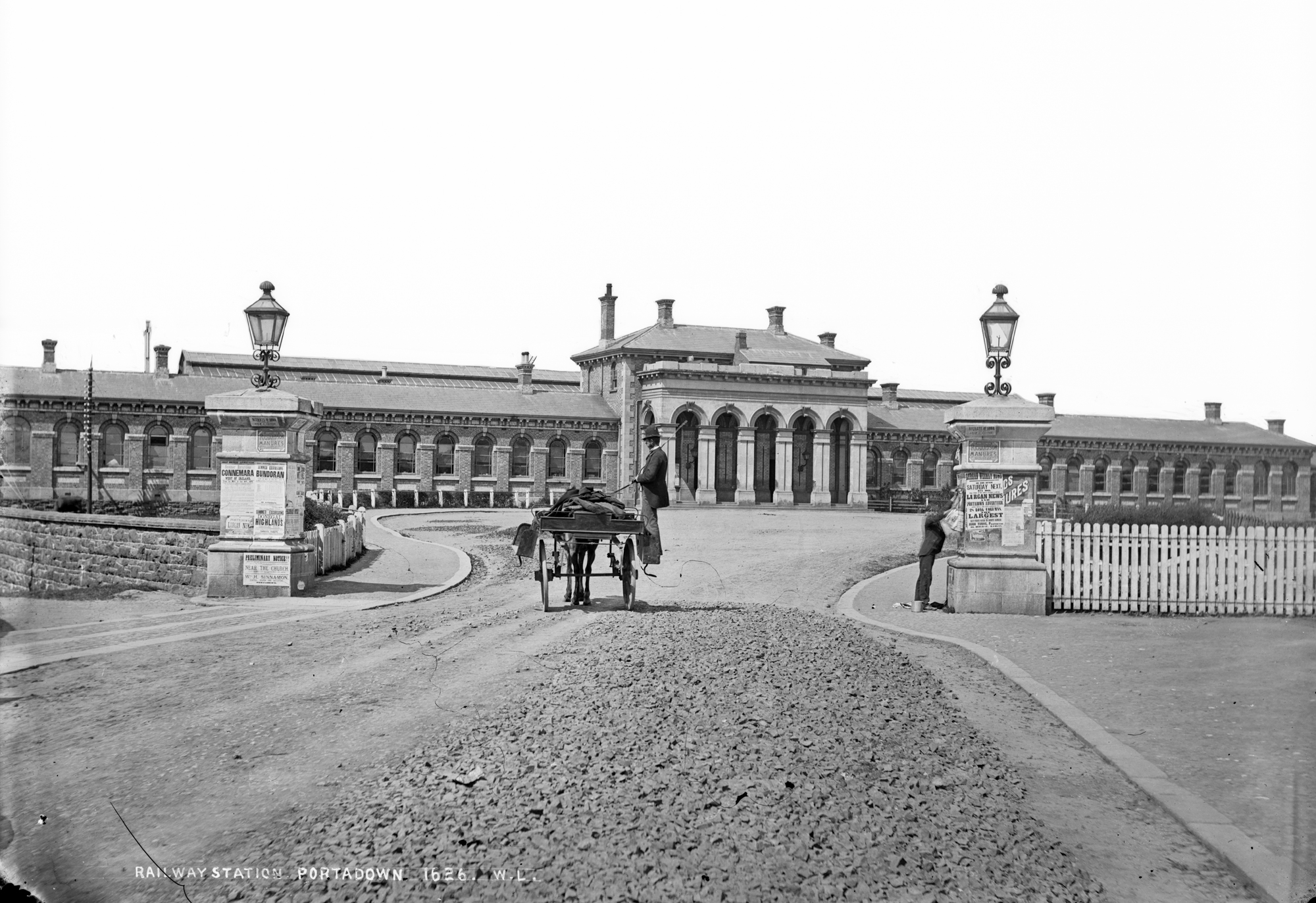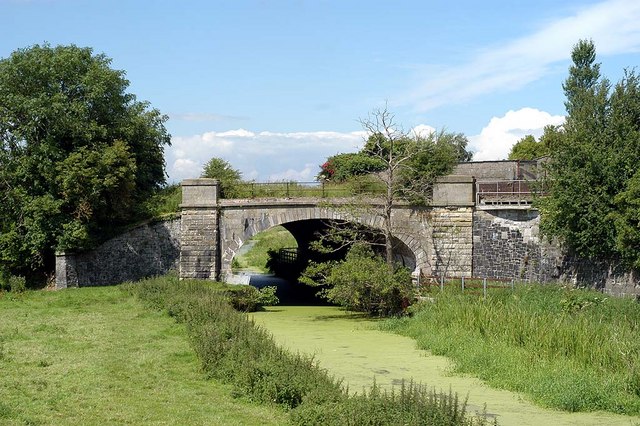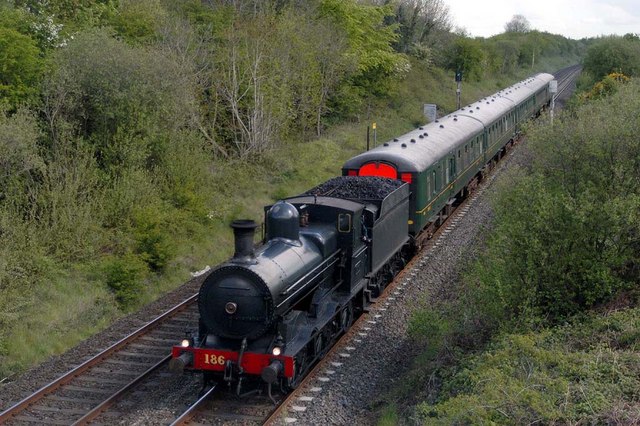|
Lurgan Railway Station
Lurgan railway station serves Lurgan in County Armagh, Northern Ireland. History The station opened on 18 November 1841. In 1972, the original Great Northern Railway station building was destroyed by a paramilitary bomb, and subsequently the current station building was erected. Service Mondays to Saturdays there is a half-hourly service towards or in one direction and to , , and in the other. Extra services run at peak times, and the service reduces to hourly operation in the evenings. On Sundays there is an hourly service in each direction. There is also a Sunday-only Enterprise service with one morning train to Dublin Connolly Connolly station ( ga, Stáisiún Uí Chonghaile) or Dublin Connolly is one of the busiest railway stations in Dublin and Ireland, and is a focal point in the Irish route network. On the North side of the River Liffey, it provides InterC .... References External links * Railway stations in County Armagh Railw ... [...More Info...] [...Related Items...] OR: [Wikipedia] [Google] [Baidu] |
Lurgan
Lurgan () is a town in County Armagh, Northern Ireland, near the southern shore of Lough Neagh. Lurgan is about south-west of Belfast and is linked to the city by both the M1 motorway and the Belfast–Dublin railway line. It had a population of about 25,000 at the 2011 Census and is within the Armagh, Banbridge and Craigavon district. For some purposes, Lurgan is treated as part of the "Craigavon Urban Area" along with neighbouring Craigavon and Portadown. Lurgan is characteristic of many Plantation of Ulster settlements, with its straight, wide planned streets. It is the site of a number of historic listed buildings including Brownlow House and Lurgan Town Hall. Lurgan Park is the largest urban park in Northern Ireland. Historically the town was known as a major centre for the production of textiles (mainly linen) after the industrial revolution and it continued to be a major producer of textiles until that industry steadily declined in the late 20th century. The develop ... [...More Info...] [...Related Items...] OR: [Wikipedia] [Google] [Baidu] |
Railway Stations Served By NI Railways
Rail transport (also known as train transport) is a means of transport that transfers passengers and goods on wheeled vehicles running on rails, which are incorporated in tracks. In contrast to road transport, where the vehicles run on a prepared flat surface, rail vehicles (rolling stock) are directionally guided by the tracks on which they run. Tracks usually consist of steel rails, installed on sleepers (ties) set in ballast, on which the rolling stock, usually fitted with metal wheels, moves. Other variations are also possible, such as "slab track", in which the rails are fastened to a concrete foundation resting on a prepared subsurface. Rolling stock in a rail transport system generally encounters lower frictional resistance than rubber-tyred road vehicles, so passenger and freight cars (carriages and wagons) can be coupled into longer trains. The operation is carried out by a railway company, providing transport between train stations or freight customer facilit ... [...More Info...] [...Related Items...] OR: [Wikipedia] [Google] [Baidu] |
Railway Stations In County Armagh
Rail transport (also known as train transport) is a means of transport that transfers passengers and goods on wheeled vehicles running on rails, which are incorporated in tracks. In contrast to road transport, where the vehicles run on a prepared flat surface, rail vehicles (rolling stock) are directionally guided by the tracks on which they run. Tracks usually consist of steel rails, installed on sleepers (ties) set in ballast, on which the rolling stock, usually fitted with metal wheels, moves. Other variations are also possible, such as "slab track", in which the rails are fastened to a concrete foundation resting on a prepared subsurface. Rolling stock in a rail transport system generally encounters lower frictional resistance than rubber-tyred road vehicles, so passenger and freight cars (carriages and wagons) can be coupled into longer trains. The operation is carried out by a railway company, providing transport between train stations or freight customer facili ... [...More Info...] [...Related Items...] OR: [Wikipedia] [Google] [Baidu] |
Portadown Railway Station
Portadown Railway Station serves Portadown in County Armagh, Northern Ireland. History The original Portadown station was sited half a mile east of the present station and opened on 12 September 1842, replacing a temporary station at Seagoe that had opened the preceding year. The Portadown station was moved to the present location in 1848 then reverted to its original site between 1863 and 1970. Goods traffic ceased on 4 January 1965. The present station opened in 1970, replacing a large and largely redundant station. At the time (1970) the station was called ''Portadown - Craigavon West'', a title that was quietly dropped after the "new city" Craigavon failed to materialise. The layout of the 1970 station was modified in 1997 to allow bi-directional working on all three platforms. The lines to Cavan via Armagh (closed 1957), and Derry via Dungannon and Omagh (closed 1965) diverged immediately west of the present station. In 2012, work began on a major refurbishment of the st ... [...More Info...] [...Related Items...] OR: [Wikipedia] [Google] [Baidu] |
Ulster Railway
The Ulster Railway was a railway company operating in Ulster, Ireland. The company was incorporated in 1836 and merged with two other railway companies in 1876 to form the Great Northern Railway (Ireland). History The Ulster Railway was authorised by an Act of the UK Parliament in 1836 and construction began in March 1837. The first of line, between and , were completed in August 1839 at a cost of £107,000. The line was extended in stages, opening to in 1841,Hajducki, 1974, map 9 in 1842,Hajducki, 1974, map 8 and in 1848. In 1836 a Railway Commission recommended that railways in Ireland be built to broad gauge. The Ulster Railway complied with this recommendation but the Dublin and Drogheda Railway (D&D) did not. In order for Dublin and Belfast to be linked without a break-of-gauge, in 1846 the UK Parliament passed an Act adopting a compromise gauge of for Ireland, to which the Ulster Railway's track was then re-laid. Extension of the Ulster Railway resumed, reachi ... [...More Info...] [...Related Items...] OR: [Wikipedia] [Google] [Baidu] |
Seagoe Railway Station
Seagoe Station which was opened on 31 January 1842 by the Ulster Railway Co. and closed on 12 September 1842 when the railway line was completed as far as Portadown and Portadown railway station was opened to passengers on the 12 September 1842 The former station is on the mainline between Lurgan and Portadown on the Belfast-Newry and Dublin Connolly line, located in County Armagh, Northern Ireland Northern Ireland ( ga, Tuaisceart Éireann ; sco, label= Ulster-Scots, Norlin Airlann) is a part of the United Kingdom, situated in the north-east of the island of Ireland, that is variously described as a country, province or region. Nort .... References Disused railway stations in County Armagh Railway stations in Northern Ireland opened in 1842 {{NorthernIreland-railstation-stub ... [...More Info...] [...Related Items...] OR: [Wikipedia] [Google] [Baidu] |
Pritchard's Bridge Railway Station
Pritchard's Bridge station was constructed by the Ulster Railway between Moira and Lurgan on 01/10/1842; closure is presumed in 1844? The site of the station is on the mainline of the Belfast-Newry Line and Dublin Connolly Connolly station ( ga, Stáisiún Uí Chonghaile) or Dublin Connolly is one of the busiest railway stations in Dublin and Ireland, and is a focal point in the Irish route network. On the North side of the River Liffey, it provides InterCi ... Line. References Disused railway stations in County Armagh Railway stations in Northern Ireland opened in 1842 Railway stations in Ireland closed in 1844 {{NorthernIreland-railstation-stub ... [...More Info...] [...Related Items...] OR: [Wikipedia] [Google] [Baidu] |
NI Railways
NI Railways, also known as Northern Ireland Railways (NIR) ( ga, Iarnród Thuaisceart Éireann); and for a brief period Ulster Transport Railways (UTR), is the railway operator in Northern Ireland. NIR is a subsidiary of Translink, whose parent company is the Northern Ireland Transport Holding Company (NITHCo), and is one of seven publicly owned train operators in the United Kingdom, the others being Direct Rail Services, Northern Trains, Transport for Wales Rail, Southeastern, LNER, and ScotRail. It has a common Board of Management with the other two companies in the group, Ulsterbus and Metro (formerly Citybus). The rail network in Northern Ireland is not part of the National Rail network of Great Britain, nor does it use Standard Gauge, instead using Irish Gauge in common with the Republic of Ireland. Also, NIR is the only commercial non-heritage passenger operator in the United Kingdom to operate a vertical integration model, with responsibility of all aspects of the netw ... [...More Info...] [...Related Items...] OR: [Wikipedia] [Google] [Baidu] |
Northern Ireland Railways
NI Railways, also known as Northern Ireland Railways (NIR) ( ga, Iarnród Thuaisceart Éireann); and for a brief period Ulster Transport Railways (UTR), is the railway operator in Northern Ireland. NIR is a subsidiary of Translink, whose parent company is the Northern Ireland Transport Holding Company (NITHCo), and is one of seven publicly owned train operators in the United Kingdom, the others being Direct Rail Services, Northern Trains, Transport for Wales Rail, Southeastern, LNER, and ScotRail. It has a common Board of Management with the other two companies in the group, Ulsterbus and Metro (formerly Citybus). The rail network in Northern Ireland is not part of the National Rail network of Great Britain, nor does it use Standard Gauge, instead using Irish Gauge in common with the Republic of Ireland. Also, NIR is the only commercial non-heritage passenger operator in the United Kingdom to operate a vertical integration model, with responsibility of all aspects of the net ... [...More Info...] [...Related Items...] OR: [Wikipedia] [Google] [Baidu] |
Dublin Connolly
Connolly station ( ga, Stáisiún Uí Chonghaile) or Dublin Connolly is one of the busiest railway stations in Dublin and Ireland, and is a focal point in the Irish route network. On the North side of the River Liffey, it provides InterCity, Enterprise and commuter services to the north, north-west, south-east and south-west. The north–south Dublin Area Rapid Transit (DART) and Luas light rail services also pass through the station. The station offices are the headquarters of Irish Rail, Iarnród Éireann. Opened in 1844 as ''Dublin Station'', the ornate facade has a distinctive Italianate tower at its centre. History On 24 May 1844 the Dublin and Drogheda Railway (DDR) began public operations from an interim terminus at the Royal Canal, and on the same day the foundation stone for what is now Connolly station was laid by Earl de Grey, Lord Lieutenant of Ireland. The station was opened for operations on 29 November 1844 as ''Dublin Station'', but was renamed ''Am ... [...More Info...] [...Related Items...] OR: [Wikipedia] [Google] [Baidu] |





_(cropped).jpg)
